Ten-Tec AC5 antenna tuner
last updated 28 November 2023.
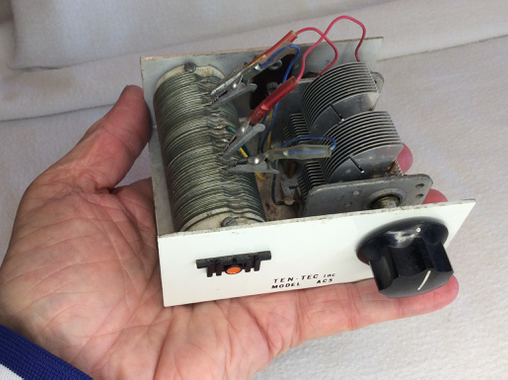
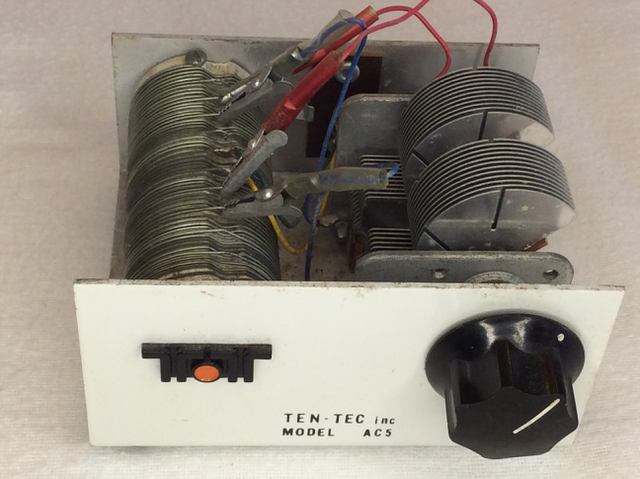
The Ten-Tec AC5 is a small QRP antenna tuner for balanced antennas, as well as end-fed wires. Maximum power is about 10 watts. It consists of a coil and a dual capacitor. A set of alligator clips can connect the antenna and the capacitor to different taps on the coil. The coax is connected across 5 turns in the center of the coil, rather than using a separate link. Because the clips are adjusted manually, no top cover is provided for the unit.
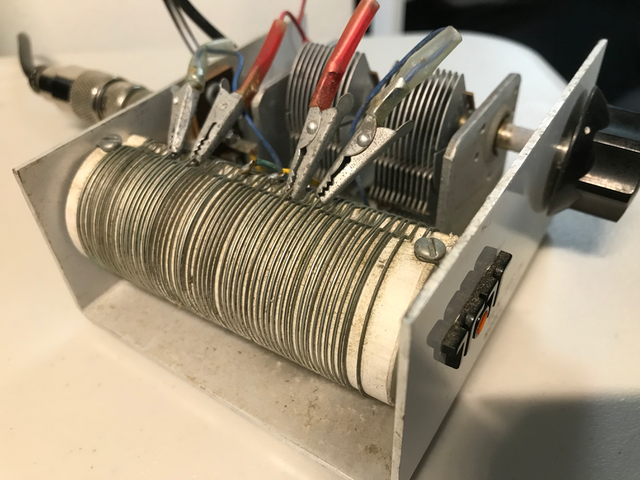
The coil taps are adjusted manually. The blue clips go to the capacitor sections, the red clips go to the antenna feedline.

The AC5 was originally designed to be used with the PowerMite PM-1 / PM-2 QRP transceivers, which covered 40m and 80m. It matches reasonably well on 80m through 20m, although the stock version may only get the SWR down to 2 : 1 in some cases. On my original AC5 I pried up additional turns of wire to give more tap points to give a better range of adjustment, and I used it up to 10m, although the matching range is somewhat limited by the fixed 5-turn primary. Sometimes it takes a bit of work to keep the clips from shorting to each other then they are on adjacent taps. That AC5 got sold along with my Argonaut 505, but I recently found this one at a hamfest.
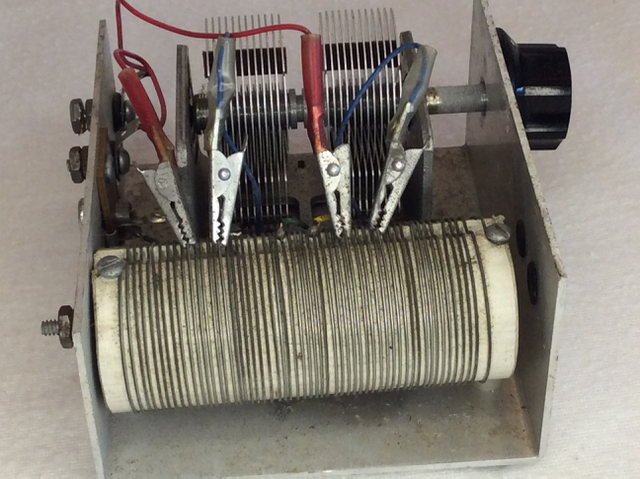
The coil is wound on a ceramic form. The coil turns can slip a bit – I suggest getting them evenly spaced, then adding a line of epoxy glue down each side to keep them in place. (Note that the blue and red clips on the left side should be reversed for the tuner to be properly balanced.)
Matching range? Unknown, and not specified. But I’ve used it to feed vee beams, loops, end-fed wires (including Zepp-fed arrangements), doublets, etc. My current antenna is a 40m doublet, and matches it on 80m through 15m. In fact, on 40m through 17m I don’t even need to move the coil clips – just adjust the capacitor.
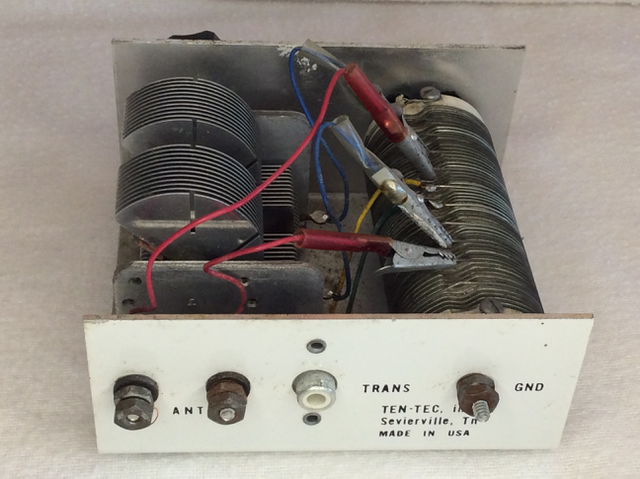
The back panel has an RCA jack for the transmitter, and bolts with nuts for the balanced feedline and ground. It might be more convenient for field use with longer bolts and wing nuts.
This isn’t included in the Antenna Tuner Efficiency evaluation because it isn’t designed for a coax output, and I don’t yet have a good way to compare the efficiency or output balance for balanced tuners. But it certainly appears to have a wider matching range than the Johnson Matchbox.
It isn’t quite a link-coupled antenna tuner, because the coax is tapped onto the coil instead of having its own link, but it comes close, and it would be easy to build your own. Now I’m thinking about a 100W version…
back to:
antenna tuner efficiency and ratings
Related links:
80m horizontal loop for Field Day
External links:
W4RNL’s tutorial on link-coupled tuners: overview part 1 part 2 part 3 part 4 part 5